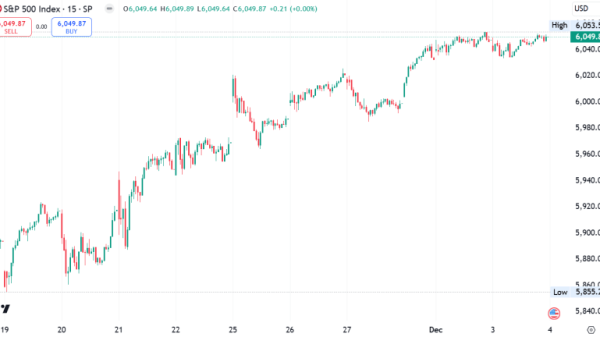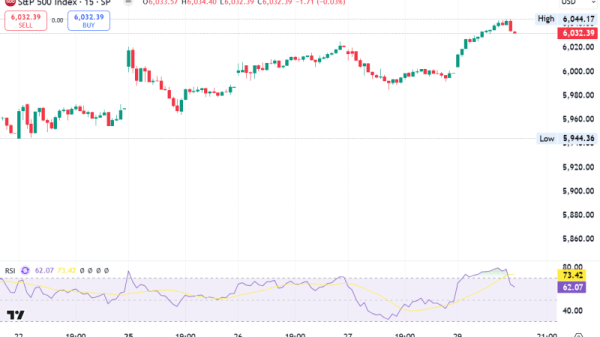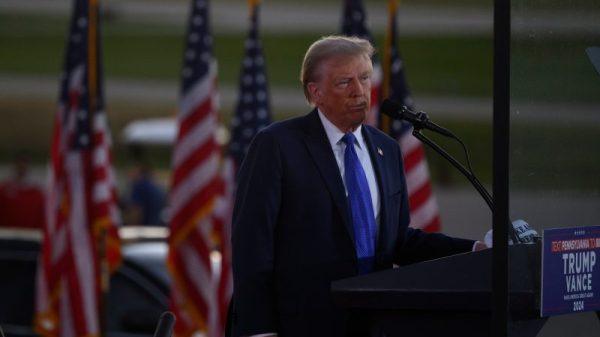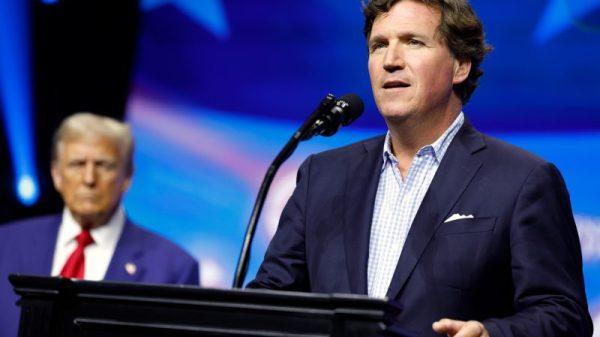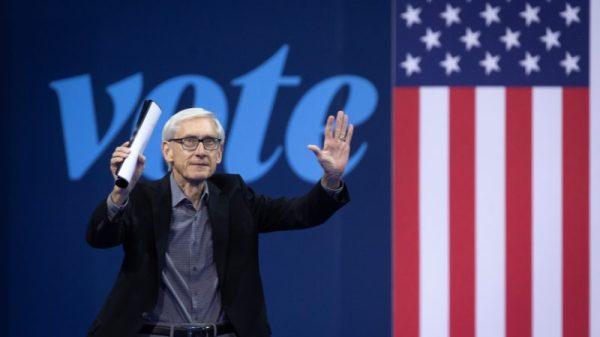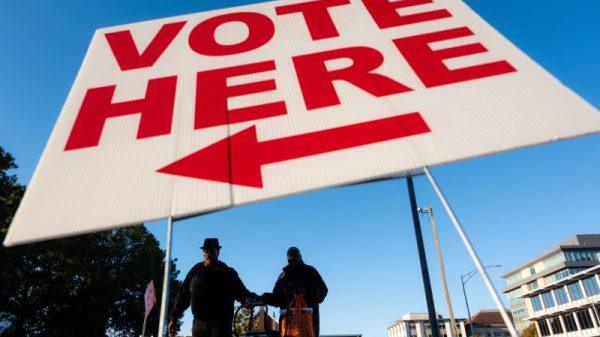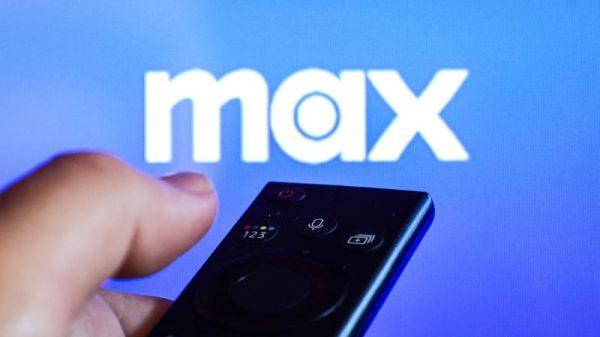Commercial Metals Company (NYSE:CMC) reported a successful fiscal year 2024, marked by record employee safety performance and solid financial results despite market challenges. The company achieved core EBITDA of $1 billion, down from $1.4 billion in fiscal 2023 but still 40% above pre-pandemic levels.
Key Takeaways:
Core EBITDA of $1 billion for fiscal 2024
$900 million in cash flow from operations
$261.8 million returned to shareholders, a 48% increase from fiscal 2023
Arizona 2 micro mill expected to reach operational breakeven in Q1 2025
Steel West Virginia project on track for commissioning in late 2025
Company Outlook
Anticipates improved market conditions in the second half of fiscal 2025
Solid pipeline of construction projects driven by infrastructure investment
Implementing TAG initiative for margin enhancement and growth opportunities
Projecting capital expenditures of $630-$680 million for fiscal 2025
Bearish Highlights
Decline in consolidated financial results expected for Q1 2025
Temporary softness in the construction industry
Weaker pricing in North America Steel Group
Increased rebar imports impacting Europe Steel Group
Bullish Highlights
Record employee safety performance achieved
Strong performance from Emerging Businesses Group
Improved leverage metrics with net debt to EBITDA ratio of 0.3 times
Positive long-term outlook for construction market
Misses
Q4 net earnings of $103.9 million, down from $184.2 million in the prior year
Consolidated core EBITDA of $227.1 million, a 31% decline year-over-year
Reduced profitability in North American Steel Group due to lower steel margins
Q&A Highlights
Arizona 2 mill expected to reach full run rate of 500,000 tons per annum
Revised projection for infrastructure spending impact on rebar demand
Disciplined approach to potential acquisitions, focusing on economic viability
Commercial Metals Company (CMC) reported a solid performance for fiscal year 2024, despite facing market challenges. The company achieved core EBITDA of $1 billion, which, while lower than the previous year’s $1.4 billion, remained 40% above pre-pandemic levels. CMC generated $900 million in cash flow from operations and returned $261.8 million to shareholders, representing a 48% increase from fiscal 2023.
CEO Peter Matt highlighted the company’s record employee safety performance and progress on key projects. The Arizona 2 micro mill is expected to reach operational breakeven in Q1 2025, with a target production run rate of 500,000 tons by the end of 2025. The Steel West Virginia project is advancing as planned, with commissioning anticipated in late 2025.
For the fourth quarter, CMC reported net earnings of $103.9 million ($0.90 per diluted share) on $2 billion in sales, with consolidated EBITDA of $227.1 million. While the North America Steel Group faced weaker pricing, the Emerging Businesses Group showed strong results.
Looking ahead, CMC expects improved market conditions in the second half of fiscal 2025, supported by a solid pipeline of construction projects driven by infrastructure investment. The company is implementing its TAG initiative to enhance margins and explore growth opportunities, both organic and inorganic.
CMC maintains a strong liquidity position, with total liquidity nearing $1.7 billion. The company’s leverage metrics have improved, with a net debt to EBITDA ratio of 0.3 times. For fiscal 2025, CMC anticipates capital expenditures between $630 million and $680 million, primarily allocated to the Steel West Virginia project and sustaining investments.
While CMC expects a decline in consolidated financial results for Q1 2025 due to temporary softness in the construction industry, management remains confident in the long-term strength of the construction market and the positive contributions from ongoing strategic initiatives.
InvestingPro Insights
Commercial Metals Company’s (CMC) solid performance in fiscal year 2024, despite market challenges, is reflected in several key metrics from InvestingPro. The company’s market capitalization stands at $6.43 billion, indicating its significant presence in the steel industry. CMC’s P/E ratio of 12.96 suggests that the stock is reasonably valued compared to its earnings, which aligns with the company’s reported financial stability.
InvestingPro data shows that CMC’s revenue for the last twelve months as of Q4 2024 was $7.93 billion, with a gross profit margin of 17.14%. While the revenue growth was negative at -9.93%, this is consistent with the company’s report of facing market challenges. However, the operating income margin of 8.75% demonstrates CMC’s ability to maintain profitability even in a challenging environment.
Two particularly relevant InvestingPro Tips for CMC are:
1. “Management has been aggressively buying back shares” – This aligns with the company’s report of returning $261.8 million to shareholders, a 48% increase from fiscal 2023.
2. “Has maintained dividend payments for 54 consecutive years” – This impressive track record underscores CMC’s commitment to shareholder returns, even during challenging periods.
These tips, along with CMC’s dividend yield of 1.28% and dividend growth of 12.5% in the last twelve months, highlight the company’s focus on shareholder value, which was emphasized in their fiscal year report.
It’s worth noting that InvestingPro offers 10 additional tips for CMC, providing investors with a more comprehensive analysis of the company’s financial health and market position. These additional insights could be valuable for those looking to delve deeper into CMC’s investment potential.
Full transcript – Commercial Metals Comp (CMC) Q4 2024:
Operator: Hello, and welcome, everyone, to the Fourth Quarter and Fiscal Year 2024 Earnings Call for CMC. Joining me on today’s call are Peter Matt, CMC’s President and Chief Executive Officer; and Paul Lawrence, Senior Vice President and Chief Financial Officer. Today’s materials, including the press release and supplemental slides that accompany this call, can be found on CMC’s Investor Relations website. Today’s call is being recorded. [Operator Instructions] After the company’s remarks, we will have a question-and-answer session, and we’ll have a few instructions at that time. I would like to remind all participants that during the course of this conference call, the company will make statements that provide information other than historical information and will include expectations regarding economic conditions, effects of legislation, US steel import levels, construction activity, demand for finished steel products, the expected capabilities, benefits, and timeline for construction of new facilities, the company’s operations, the company’s strategic growth plan, the company’s future results of operations, financial measures, and capital spending. These and other similar statements are considered forward-looking and may involve certain assumptions and speculation and are subject to risks and uncertainties that could cause actual results to differ materially from these expectations. These statements reflect the company’s beliefs based on current conditions but are subject to certain risks and uncertainties, including those that are described in the risk factors and forward-looking statements sections of the company’s latest filings with the US Securities and Exchange Commission, including the company’s latest Annual Report on Form 10-K. Although these statements are based on management’s current expectations and beliefs, CMC offers no assurance that these expectations or beliefs will prove to be correct, and actual results may vary materially. All statements are made only as of this date. Except as required by law, CMC does not assume any obligation to update, amend, or clarify these statements in connection with future events, changes in assumptions, the occurrence of anticipated or unanticipated events, new information or circumstances, or otherwise. Some numbers presented will be non-GAAP financial measures. And reconciliations for such numbers can be found in the company’s earnings release, supplemental slide presentation or on the company’s website. Unless stated otherwise, all references made to year or quarter-end are references to the company’s fiscal year or fiscal quarter. And now, for opening remarks and introductions, I will turn the call over to Peter.
Peter Matt: Thank you. Good morning, everyone, and welcome to CMC’s fourth quarter and fiscal year 2024 earnings conference call. I am joined today by our Senior Vice President and Chief Financial Officer, Paul Lawrence. I will start this morning’s discussion with an overview of CMC’s fiscal 2024 results and the accomplishments during the year. I will then cover our fourth-quarter performance, provide commentary on current market conditions, and share an update on CMC’s strategic planning efforts. Paul will cover the fourth quarter’s financial information in more detail, and I will conclude with our outlook for the first fiscal quarter of 2025 and beyond. We will then open the call to questions. As a reminder, additional information regarding the quarter is provided in the supplemental slides that accompany this call, which can be found on CMC’s Investor Relations website. Fiscal 2024 was another very solid year for CMC, one that included record employee safety performance, the third best financial results in our company’s 109-year history, and meaningful progress across a number of strategic fronts. Of our many accomplishments this year, I am most proud of our continuous improvement in safety. Our success as a company starts with keeping our people safe and ensuring everyone leaves their shift in the same condition in which they arrived. In fiscal 2024, we came closer to that goal than ever before, achieving the lowest incident rate in the history of CMC and driving a meaningful reduction in absolute number of OSHA recordable events. That level of performance does not happen by luck. It happens through a methodical approach to identifying and addressing areas of risk, and through direct engagement with every employee. I would like to call out three areas of success on the safety front in fiscal 2024 that the CMC team should be very proud of. First, we drove a significant reduction in the number of incidents involving hands and fingers. And second, we saw a substantial reduction in incidents involving new hires. These types of incidents are perennial challenges for any manufacturer, CMC included. We have improved in these areas through focused training, rethinking job protocols, and the deployment of new technologies. Third, we saw a dramatic improvement in overall safety performance at recently acquired facilities within our emerging businesses group. They have been eager adopters of CMC’s industry-leading safety culture and practices, which has resulted in EBG achieving the lowest incident rate among our three operating segments in 2024. Though we can point to a strong safety trend across the organization, the work is never done, and we will continue pushing toward our ultimate goal of zero incidents. Turning to our financial results. Fiscal 2024 was among the best in CMC’s history. Core EBITDA of $1 billion remained well above historical levels, though down from the $1.4 billion achieved in fiscal 2023. Without proper context, it’s easy to lose sight of just how impressive fiscal 2024 was. Even after declining from peak levels, core EBITDA last year remained 40% above any pre-pandemic year. The fiscal 2024 core EBITDA margin of 12% was likewise historically strong. These notable financial results clearly demonstrate the impact of the thoughtful and decisive strategic actions we took over the last several years, which have enabled us to significantly grow our company, remake our industry, and set us on the path for continued success. Our solid profitability in fiscal 2024 translated into strong cash flow from operating activities of $900 million, which supports CMC’s ongoing investment in future growth initiatives as well as our commitment to providing competitive levels of cash distributions to our shareholders. During the year, we returned $261.8 million to our equity investors in the form of share repurchases and dividends, making an increase of 48% from fiscal 2023. Buybacks in fiscal 2024 were equal to 3% of the shares outstanding at the beginning of the fiscal year, also representing a meaningful acceleration compared to fiscal 2023. CMC made solid advancements along several strategic fronts in fiscal 2024, including meaningful progress on our mill growth projects. We continue to move towards breakeven at Arizona 2, the first micro mill in the world capable of producing both rebar and merchant bar products. As with any breakthrough technology, our team has pushed through the unique challenges that come with bringing a first-of-its-kind technology online and they ended fiscal 2024 with a string of solid and growing production months. Based on our learnings over the last year and given where we are positioned today, we expect to achieve operational breakeven on a monthly basis during the first quarter. We continue to feel good about our progress in increasing operating levels and believe we will exit 2025 at or near target annualized run rate of production of 500,000 tons. Meanwhile, we reached several key construction milestones at our Steel West Virginia site in fiscal 2024. We have completed civil work, installed large portions of supporting infrastructure, and poured foundations for process equipment and buildings. Equipment is now being installed, and we remain on track for the commissioning process to begin in late calendar 2025. In fiscal 2024, we also made significant progress developing the strategic plan that will deliver CMC’s next phase of growth. As you may recall, to support these efforts, we began the year with an organizational realignment that is intended to facilitate execution and elevate transparency. This action included creating two segments capturing our traditional steel vertical value chains, the North American steel and Europe steel groups, and a third standalone operating segment for CMC’s underpenetrated growth businesses, the Emerging Businesses Group. Nearly a year on, the realignment is achieving its aim of supporting value-focused decision-making and resource allocation through enhanced visibility into our key value drivers by line of business. Looking ahead, we have developed an ambitious plan that seeks to enhance our growth trajectory and drive permanent improvement in CMC’s margin profile by leveraging both accretive organic projects and inorganic growth in attractive adjacent markets. We are very excited about these strategic efforts, and we expect — that we expect will drive significant value for shareholders. Little later on this call, I will provide some high-level insights into our plan to enhance margins across CMC and operational and commercial excellence program we have named transform, advance and grow or TAG for short, and we look forward to providing a more substantive update on our strategic plan in the quarters ahead. In summary, fiscal 2024 was a year that every member of the CMC team can be proud of. We kept our people safer than ever before. We continued to generate strong financial results and we rewarded our shareholders with increased cash returns. We also continued to build for the future through organic investments and strategic planning that is expected to lay the foundation for significant long-term value creation. Turning now to the fourth quarter results. We reported in our press release this morning, it was another period of good financial performance. CMC continued to generate core EBITDA, core EBITDA margin and earnings per diluted share, well above historic averages. As we have noted on previous calls, we believe margins and earnings are normalizing at sustainably higher levels compared to before the pandemic. CMC reported net earnings for the fourth quarter of $103.9 million or $0.90 per diluted share on sales of $2 billion. We generated consolidated EBITDA for the quarter of $227.1 million, producing a core EBITDA margin of 11.4% and a trailing 12-month return on invested capital of 10%. While results in our North America Steel Group were hampered by weaker market sentiment that negatively influenced long steel pricing and margins, overall shipping volumes were resilient on solid levels of ongoing construction activity. Our Europe Steel Group continue to trend of near breakeven on an adjusted EBITDA basis. Excellent cost management is allowing us to maintain our financial performance at this level despite a challenging margin environment and increased incursions into the Polish market by imports from neighboring countries. CMC’s Emerging Businesses Group generated strong results during the quarter and its adjusted EBITDA margin improved on both a year-over-year and a sequential basis. Turning now to CMC’s markets in North America, demand for our steel products remained healthy during the quarter. When adjusted for available shipping days, CMC’s volumes of finished products were essentially unchanged, both on a year-over-year and a sequential quarter basis. Activity levels were generally good across our geographical footprint with some areas appearing to benefit modestly from a catch-up in shipments in the wake of challenging weather earlier in the year. Stable shipment volumes have been supported by solid backlogs of ongoing construction projects that continue to consume steel. However, given elevated uncertainty regarding the path and the pace of interest rate reductions, as well as the outcome of the US presidential election, project owners and key decision-makers are hesitant to act. This hesitancy is widespread across most segments of the construction markets with the notable exception of publicly funded work such as infrastructure and institutions. Uncertainty has also weighed on steel pricing and margins as the overall market sentiment and near-term confidence have softened. Following six months of impressive stability, we saw metal margins shift lower during — in mid-quarter, which was the primary driver of reduced consolidated profitability in the fourth quarter compared to the third quarter of fiscal 2024. We believe these market conditions are transient in nature and will subside once greater clarity emerges, allowing strong underlying fundamentals to return. CMC’s downstream bidding activity has remained resilient, which points to a solid pipeline of potential future projects. Our internal data is supported by external data points such as the Dodge Momentum Index and insights from customer conversations. The Dodge Momentum Index, or DMI, measures the monthly value of construction projects entering the planning phase. Having recently hit an all-time high, the Index appears to indicate that project owners have confidence that a rebound in construction activity will occur and are building a sizable pipeline in preparation to act once construction conditions improve. As mentioned previously, we anticipate a catalyst of improvement will be a clear path towards lower interest rates and visibility into future government policy. As we have discussed at length in the past, powerful structural trends will also benefit the US construction market, including infrastructure investment, reshoring of manufacturing, energy transition and transmission buildout as well as measures to address chronic housing shortages. We believe these trends are in their early stages and will propel construction activity for years to come. Conditions for our Europe Steel Group were similar to the prior quarter. Benefits from an improving Polish macroeconomic environment and supply discipline among domestic long steel producers have been offset by the influx of excess material from neighboring countries, namely Germany. Total imports of rebar are up 85% on a calendar year-to-date basis, while flows from Germany have increased by 141%. This foreign supply has more than matched the incremental demand from a growing residential construction market and supply reduction from domestic players. As a result, margins remain under pressure. Against this challenging backdrop, our team in Poland has been able to achieve near-breakeven results through aggressive cost management. The impact of these cost management measures has been significant, as evidenced by the $26.5 million year-over-year improvement in adjusted EBITDA during the fourth quarter despite an 18% reduction in volumes and no help from metal margin. Based on our current view of the landscape, we would not anticipate meaningful positive change in either the overall market environment or CMC’s Europe Steel Group earnings until an economic recovery develops in Germany. Before I turn things over to Paul, I would like to discuss the strategic path that CMC is embarking on, which is intended to drive the next phase of meaningful value accretive growth. As outlined on Slide 10 of the supplemental presentation, our aim with this strategy is threefold. First, to achieve sustainably higher, less volatile, through-the-cycle margins that are fortified by our operational and commercial excellence initiatives. Second, to execute on attractive growth — organic growth opportunities. And third, in a disciplined manner to pursue inorganic growth opportunities that broaden CMC’s commercial portfolio of early-stage construction products, improve our customer value proposition and meaningfully extend our growth runway. CMC’s goal of permanent and meaningful improvement in margin — in its merchant profile is being pursued through transform, advance and grow or tag our enterprise-wide operational and commercial excellence initiative. This program is unlike any other ever launched at CMC due to the breadth and the depth of its reach as well as its visibility and the accountability structures built to support it. Every line of business and every support function has been involved in identifying and quantifying opportunities that now include over 150 different initiatives. This has meant finding value within a business between businesses, between businesses and central support or even across the entire enterprise. The involvement in the TAG program has reached deep into our organization as well. Those best equipped to identify the greatest opportunities are the team members who work where the action happens on a daily basis, CMC’s department plant and regional managers. Their participation has been critical as we search for value-generating opportunities. And just as importantly, it has created buy-in at a local business level. To drive the execution of CMC’s TAG program, we have formed a dedicated team to manage the identification, tracking and reporting of all opportunities. This group will also help prioritize across identified initiatives and stage their rollout in waves in partnership with the initiative owners at the businesses or support level. TAG is driving a more elevated level of rigor and visibility to strategic execution that is intended to ensure the success and maximize the amount of value generated. From an investor perspective, we anticipate that value will come as sustained margin enhancement, earnings growth, reduced working capital needs, and greater invested capital efficiency. However, just as beneficial as meeting TAG’s financial goals is the creation of a value-generating engine at CMC in the form of habits that will become ingrained in our culture as we execute on the program, a drive for continuous improvement, increased collaboration to achieve the targets and a methodical approach to tracking are all traits that we believe will continue to pay dividends long after TAG runs its course. Looking more near-term, we expect TAG efforts to start yielding meaningful financial benefits in fiscal 2025. We plan to begin quantifying those benefits for you as we achieve results against the first wave of active initiatives now underway. We will have more to share with you in the future regarding our plan to propel growth through both organic and inorganic avenues. But for now, I would like to share a few comments. Organic growth extends beyond our major steel investments. CMC is pursuing a number of smaller projects aimed at bolstering our portfolio for — of proprietary solutions and enabling us to drive further penetration into growing markets. One such investment is an additional geogrid production line in our Blackwell, Oklahoma facility. The new line will allow CMC to better supply the growing demand for our latest higher margin geogrid offering as well as reduce the logistics cost to several key North American geographies. On the inorganic front, we have developed a game plan for meaningful growth into attractive adjacencies in which we believe we have a clear right to play given CMC’s current commercial participation, customer knowledge, market positioning, and operational capabilities. We are targeting segments of the $150 billion early-stage construction market that touch the types of projects we are already serving and feature higher, more stable margins. These adjacencies should also benefit from the megatrends that are expected to drive construction activity for years to come, which include infrastructure investment, reshoring, and the general scarcity of labor. As you can tell, I am very pleased with our strong performance in 2024, and even more excited about our strategic path forward. With that, I will now turn the discussion over to Paul to provide more detail on our financial results. Paul?
Paul Lawrence: Thank you, Peter, and good morning to everyone on the call. As noted earlier, we reported fiscal fourth quarter 2024 net earnings of $103.9 million or $0.90 per diluted share compared to prior year levels of $184.2 million and $1.56, respectively. Consolidated core EBITDA was $227.1 million for the fourth quarter of 2024, representing a 31% decline from the $327.7 million generated during the prior year period, but still an historically strong result. Slide 14 of the supplemental presentation illustrates the year-to-year changes in CMC’s quarterly financial performance. Profitability at the North American Steel Group was negatively impacted by lower margins over scrap, while results at Europe — at the Europe Steel Group benefited from significant cost reductions. Adjusted EBITDA was unchanged in CMC’s Emerging Businesses Group and consolidated core EBITDA margin of 11.4% remained above average historical levels when compares to 14.8% a year ago. CMC’s North American Steel Group generated adjusted EBITDA of $210.9 million for the quarter, equal to $188 per ton of finished steel shipped. Segment adjusted EBITDA decreased 14% on a sequential quarter basis, driven primarily by lower margin over scrap costs on steel products. Results were also impacted by the P&L effect of selling higher-cost inventory into a falling price environment. The adjusted EBITDA margin for the North American Steel Group of 13.5% compares to 14.7% in the third quarter. During the quarter, CMC incurred mill operational commissioning costs related to Arizona 2 of $15.1 million, excluding depreciation. Including depreciation, costs amounted to $25.3 million. Both figures are on a pre-tax basis and were up from the levels incurred in recent quarters due to the high cost of power during peak summer months and time taken for some corrective outages that impacted our volumes. As Peter indicated earlier, demand for long steel products was stable during the quarter. Finished steel shipments decreased by 1% on a sequential basis, but were virtually unchanged when adjusted for the one fewer shipping day compared to the third quarter. Turning to Slide 16 of the supplemental deck. Our Europe Steel Group reported an adjusted EBITDA loss of $3.6 million for the fourth quarter of 2024. This compares to a loss of $4.2 million incurred in the third quarter. The sequential improvement was driven by lower controllable cost per ton of steel shipped as well as a 7.4% increase in volumes. Financial performance during the fourth quarter continued a trend of improvement from the depressed levels of the fourth quarter of fiscal 2023 and the first quarter of fiscal 2024, during which time quarterly losses averaged $30 million excluded the impact of energy rebates. As mentioned earlier, this improvement has resulted primarily from self-help cost management measures taken by our team in Poland. Margin levels have been range-bound between roughly $270 per ton and $290 per ton for the last five quarters despite an improving Polish economic environment and positive developments within the Polish construction sector. We would expect margins to remain, however, under pressure until the level of rebar imports begin to recede a scenario that likely requires an economic recovery in Germany. The Emerging Business Group’s fourth-quarter net sales of $195.6 million, decreased by 3.7% on a quarter-over-quarter basis, while adjusted EBITDA of $42.5 million grew by 11.2%. The sequential improvement in profitability was driven by strong activity levels within our Tensar unit and good shipment levels of performance reinforcing steel. A richer sales mix during the fourth quarter led to a 140 basis point increase in adjusted EBITDA margin compared to the third quarter of fiscal 2024. Notably, Tensar achieved its most profitable quarter as a division of CMC, driven by continued adoption of its latest geogrid solution and improved production performance. As of August 31st, cash and cash equivalents totaled $857.9 million. In addition, we had approximately $826 million of availability under our credit and accounts receivable facilities, bringing total liquidity to just under $1.7 billion. During the quarter, we generated $351.8 million of cash from operating activities, which included an impressive $176.9 million release of cash from working capital as we navigate through this period of uncertainty that Peter commented on. Capital expenditures of $81.5 million were driven by construction activity related to Steel West Virginia micro mill project. CMC’s leverage metrics remain attractive and have improved significantly over the last fiscal years. As can be seen by Slide 21, our net debt to EBITDA ratio now sits at just 0.3 times while net debt to capitalization is only 6%. We believe our robust balance sheet and overall financial strength provide us flexibility to finance our strategic organic growth projects and pursue opportunistic M&A while continuing to return cash to shareholders. CMC’s effective tax rate was 22.3% in the fourth quarter and 23.6% for the full year. Looking ahead, we anticipate an effective full-year tax rate of between 24% and 25% for the fiscal 2025 year. Turning to CMC’s fiscal 2025 capital spending outlook, we expect to invest between $630 million and $680 million in total. Outside of normal sustaining investments of approximately $250 million, expenditures in 2025 will include substantial capital dollars for the construction of Steel West Virginia. Approximately $200 million of spending related to Steel West Virginia was deferred from fiscal 2024 into 2025 related to payment timing. As Peter mentioned, we are on track to begin commissioning in late calendar 2025. As outlined on the past earnings call, CMC targets a prudent and balanced approach to capital allocation. Our first priority is value accretive growth that furthers our strategy and strengthens our business. Second, is providing our shareholders with an attractive level of cash distributions in the form of both dividends and share repurchases. To this end, CMC returned approximately $261.8 million to our shareholders in fiscal 2024, equal to 54% of net earnings. Looking at the fourth quarter, CMC repurchased approximately 1 million shares at an average price of $54.71 per share. As of August 31st, we had $403.8 million available for repurchase under our current authorization. I’ll now turn it back to Peter for additional comments on CMC’s financial outlook.
Peter Matt: Thank you, Paul. We expect consolidated financial results in our first fiscal quarter of 2025 to decline from the fourth quarter level as a consequence of temporary softness within certain areas of the construction industry amid continued macroeconomic uncertainty. Finished steel shipments within the North America Steel Group are anticipated to follow normal seasonal trends while the adjusted EBITDA margin is expected to decrease on lower steel product margins over scrap costs. We would note that the recent encouraging direction of scrap pricing gives us confidence that rebar pricing has come near the bottom and should begin to move upward if scrap — if a scrap rebound is maintained. Adjusted EBITDA for our Europe Steel Group should experience a meaningful sequential increase driven by the receipt of an annual CO2 credit that is expected to be within the range of $35 million to $40 million. Underlying financial performance for the Europe Steel Group is likely to remain similar to the fourth-quarter levels. Financial results for the Emerging Businesses Group are anticipated to decline due to normal seasonality and the impact of economic uncertainty both in the United States and in Europe. We believe the current market conditions represent a transient period of softness created by uncertainty regarding important factors that influence any major capital investment, the cost of funding, and future government policy. As clarity emerges in the coming months, we believe renewed strength in our core markets will follow. We anticipate the first half of the year will be impacted by challenges related to the current uncertainty as well as typical seasonal slowness. However, we expect financial results to rebound in the second half as solid construction fundamentals return. Before we open the call up to questions, I want to reiterate how proud we are of CMC’s financial results and the strong industry that we help create. We are excited about our potential to reach new heights in the future as we execute on our key strategic priorities and deliver significant value for our shareholders. As we move past near-term uncertainty, CMC is well-positioned to benefit from powerful structural trends in North America that should drive construction activity for years to come. I would like to thank our customers for their trust and confidence in CMC and all of our employees for delivering yet another quarter of solid operating performance. Operator?
Operator: [Operator Instructions] The first question comes from Sathish Kasinathan with Bank of America. Please go ahead.
Sathish Kasinathan: Yeah. Hi. Good morning. Thanks for taking my questions. So my first question is on the guidance for the Emerging Business Group. So you indicated that the segment results could be lower on a sequential basis, but how should we look at it from a year-on-year basis given that you are continuing to see an increase in higher margin mix, especially at Tensar?
Peter Matt: Yeah. I think we should expect it to be roughly similar. Again, it’s really seasonal trends that we’re calling out here. And if you remember, that business tends to have a very strong Q3 and Q4, even more seasonality than in the rest of our business.
Sathish Kasinathan: Okay. Thank you. And then my next question is on the long-term strategic plan. So you talked about some of the examples of the initiatives that the company is working on. When do you think you’ll be in a position to quantify those benefits? Are there any low-hanging fruits that you could highlight and we should see some immediate benefit in 2025?
Peter Matt: Yeah. Thank you very much for the question, and we are really excited about our TAG initiative as a source of meaningful kind of earnings benefit. This is a program that we have structured to be over three to four years and we do expect there to be contribution in 2025. We have very clear goals internally for what this program is going to deliver. We are going to stop short on this call of sharing detail on specific numbers for 2025 and the period beyond because we are really at the starting point of the program. And let me just say a few words about that. What we have done is, we have kind of created as we said in the prepared remarks, over 150 different initiatives. We’ve taken a small subset of that and moved them into a detailed planning phase and then in the case of some of them into an execution phase. So we have a number of these initiatives that are now being executed across the company and the early returns are very positive. But again, we want to get a little bit more traction before we share more detail on that. But we do fully expect to periodically update you on the progress of that, including some of the targets that we’ve set and what we’ve achieved.
Sathish Kasinathan: Okay. Thanks, Peter, for the color, and congrats on a solid year.
Peter Matt: Thank you very much.
Operator: The next question comes from Katja Jancic with BMO Capital Markets. Please go ahead.
Katja Jancic: Hi. Thank you for taking my question. Staying a bit on the TAG initiative and I can appreciate, Peter, that you said you don’t want to provide specifics right now. But let’s say when we look at the current margins, they’re above historical levels. When you say that you’re targeting higher through-the-cycle margins, how did those stack up relative to the current margin environment? Are we talking about higher than where we are right now or kind of maintaining the current levels?
Peter Matt: Well, so, it’s a great question. And what I would say is it — and I’m going to go back a few calls to some comments that I made where our goal, as you say, is higher through-the-cycle margins. And we believe that as a consequence of the consolidation that’s occurred and the current trade environment that we are in an environment where we can and will and actually are delivering higher through-the-cycle margins. So based on what’s happened so far, we would challenge the kind of current thesis in the valuation of our shares. Having said that, TAG is only an incremental contributor to that. And what we believe is that over time as we ramp up these initiatives, we will be able to deliver incremental margins to our company. And what does that mean? What it means is, if we are in an environment where we are today, where we feel like we’re kind of — we’re not going to — we’re not calling the bottom, but we’re kind of in the, let’s call it the weaker part of what we think our business environment is going to experience, then TAG will supplement and take us to higher margin levels than we’ve been at in the past. If we are in a market where things deteriorate further, TAG will help us defend margins like what we have today. In both cases, we think there’s tremendous upside in the story and that’s what we’re really excited about. So hopefully, that gives you some additional clarity, Katja.
Katja Jancic: No, thank you for that. And maybe if I may, one more on the backlogs right now. I think you mentioned they’re still solid. Can you provide a little more clarity on the value of the backlog currently versus, let’s say, last quarter?
Paul Lawrence: Yeah, good morning, Katja. Backlog from a volume perspective, really, we continue to maintain a comparable level from either the end of the third quarter or 12 months ago. I think as Peter alluded to, construction activity is becoming more competitive as projects are delayed coming to market. And as a result, that is squeezing the margin and squeezing the price attributable to new work that is actually being contracted. And so we are seeing a lower level of value associated to the backlog and it’s really tied to the underlying price of the rebar material that’s in the backlog. So, volumes continue to be good and that’s what’s fueled the business that really during the fourth quarter we saw very sequentially and year-over-year level volumes, but the value is lower than where it was 12 months ago.
Katja Jancic: Okay. Thank you.
Peter Matt: Thank you, Katja.
Operator: The next question comes from Timna Tanners with Wolfe Research. Please go ahead.
Timna Tanners: Yeah. Hey, good morning. I wanted to ask two kind of higher level questions. If we take a step back, first, I wanted to ask about Arizona 2. And if I look at my notes over the years of what you talked about with regard to the volume contribution, I think it was supposed to be 400,000 and then 250,000. But if you look at volumes in North America 2024 fiscal year, even over two years, we’re talking about 150,000, call it. So what’s happening? Are you able to run full-out? Are you running less other places? And how do you think about volumes going forward in a softer construction market?
Peter Matt: Yeah. Well, let me comment — there’s a couple of different questions in your question. So let me comment first on Arizona 2 and then we’ll talk about kind of the run rate levels. So, it’s clear in Arizona 2 that we’ve had some challenges. You can see that in the fact that we continue to have additional start-up costs running through the system. Having said that, I just want to remind everybody that we’re doing a lot of very innovative things in this mill. And as in any case where you’re innovating, things don’t happen linearly and that’s what our experience has been. However, what I would say is we are absolutely making progress and we feel very comfortable that we are going to be able to get this up to full run rate, which is the expectation of our full run rate is 500,000 tons per annum and 150,000 tons of that being in the form of merchants, so that we can serve our customers across the country on a merchant basis. We feel very comfortable on that. And based on what we can see, we believe and we’re very confident that this mill is going to be a workhorse in our organization for years to come. So bear with us. It’s not exactly where we wanted it to be, but I think we are confident we can get to a good place. In terms of the demand in the market, clearly, we are seeing some softness today and the softness that we’re seeing today is really — and again, when we talk about the first quarter, we’re talking about really seasonal weakness. But it’s clear to say, Timna, that there is some — that there is uncertainty out there. We are going to be a disciplined supplier to the market and you’ve heard many talk about kind of value over volume will be disciplined in that regard. But we do expect and we are optimistic that the construction demand is going to be strong. And certainly, if you kind of talk about timing, we’re — we think that we are in for a period of uncertainty over the next several months, but the back half of the year could be quite strong. And that’s strength across all of our major segments, infrastructure, non-res, and residential. So hopefully that answers your question.
Timna Tanners: Yeah. Thanks. A lot of parts in there. I appreciate it. So we’ll see more of AZ 2 potentially second half. And then the other question or question there is just around Europe, So I get the Germany is particularly weak and you’re not guiding too much improvement there. And I get that you also talked about self-help, which is great. But what if Germany isn’t on a quick path to recover and this continues? Like what options do you consider that you have? What would you model if you were in our seat? I mean, how should we think about the sustainability of this kind of business? It’s been tough, I get it, but what are your options as you think higher level?
Peter Matt: Yeah. Well, look, I mean, I just want to remind everybody that this business has been a fantastic contributor to CMC over time. And if we look at it over the long term, it’s generated returns well in excess of its cost of capital. If you look at it in the ’23 timeframe, it generated over $300 million of EBITDA. So it’s been a meaningful contributor and it brings a lot to our company in terms of both construction trends and also steel making skills. I mean, if you ask the people in our North American business where some of the best steel makers in the company are, they’ll say in Poland. So we’re learning — we learn a lot from what they’ve been doing in part because of the environment that they’re in. We — our current pace — our current belief is that Germany should start to see some signs of recovery either late 2025 or coming into 2026. That’s what seems to be the consensus based on the number of conversations that we’ve had. On that basis, we are committed, we’re absolutely committed to this group and it’s a core part of our business. And again, one of the things that we really love about this team is that they’re not settling for kind of the results that they currently have. We are continuing to work on the convergence to breakeven. And based on what we’ve seen out of this team, we have every confidence that they’re going to achieve that. And the last thing I would say, Timna, is that given the cost improvement that these guys have been able to demonstrate in the operation, when there is a recovery, the profitability should come back a lot quicker. I mean the — if you look at the utilization rates that they’re running at and the conversion costs that they’ve been able to maintain, this is a low cost operation and we’re confident in that. So, thank you for the question.
Timna Tanners: Okay. Thanks for the color.
Operator: The next question comes from Tristan Gresser with BNP Paribas (OTC:BNPQY) Exane. Please go ahead.
Tristan Gresser: Yes. Hi. Good morning, and thank you for taking my questions. The first one is on the demand environment. So I understand that the pocket of weakness you mentioned that we are in the middle of because of the election. But in your presentation, you downgraded the estimated potential impact on rebar demand from infrastructure. I believe, before you were thinking it could increase rebar demand by 15%, 17%, roughly 1.5 million ton, 1.4 million ton and now you have it down to 8%, 12%, so 0.6 million tons or 0.9 million tons. So quite a bit downgrade. And my understanding is that the issue with the infrastructure was more timing than anything, but apparently the scale is also being revised downwards. So I was curious to see why you’re looking at this a bit more cautiously, more than timing.
Peter Matt: Yeah. It’s a great question and I’ll start and then Paul can add if I miss anything. But — so, we have been looking and trying to calibrate the question of what is the inflationary impact we’ve been through a period of high inflation on the actual infrastructure dollars that are spent. And our work and it was interesting, there’s a recent article out by PCA that suggests that the inflationary impact on the infrastructure spend could be somewhere in the range of 25% to 30%. And depending on the time, I think you can — in some cases, you can look at it as a 20% to 30% range. But call it in — call it as you will, 25% to 30% impact on that. That seems to corroborate what we have seen or what we are seeing in the market and the analysis that we’ve done. And so, as a consequence, we have adjusted our expectation. Now, part of this is, it’s a — this is not an easy estimate to come up with because, as you know, not all highway spending is federal, some of it is coming from the states and the states have been increasing their spend budgets. And the other thing too is inflation is now falling. So this is a moving target. So we have been kind of working to try to figure out what is the actual impact on the actual rebar tons that will be impacted. And this is the conclusion that we’ve come to, and that’s why we are adjusting that number. Now, having said that, Tristan, I want to just highlight the fact that it’s still a huge number. And we think that is something that’s going to underpin our company results over years to come. And if you look at some of the recent data points out there about the amount of infrastructure spending that there has been, we’ve got something like 80% of the spending to go. So yes, I know it took longer to come, it took longer than we expected for it to come. But the reality is it’s here now. We’re seeing it. We’re seeing it across all of our geographies and we think it’s going to remain strong. So anyway, I hope that gives some clarity to you. Paul, is there anything to add?
Paul Lawrence: No, I think hits it.
Tristan Gresser: Yeah. No. Thank you for that. That’s really helpful and clear. And I understand it’s not an easy estimate to come up with. And my second question on the merchant bar market, it seems it decorrelated a bit with rebar. I mean, we’ve seen better pricing performance. It looks like in Europe, volumes are better maybe in the US as well. So trying to get a bit — we talked a lot about rebar, but I was interested to get your perspective on the supply and demand dynamics in the US for merchant bar if possible. Thank you.
Peter Matt: Yeah. There’s — so the demand, I would characterize the demand as really kind of consistent with what I say about rebar, it’s good, it’s not great. There are kind of — again, you know that business goes mostly through service centers. Service center inventories are low. And given some of the uncertainty that’s affecting kind of our broader business, I think that’s also affecting the merchant market. And you’ve seen there has been some recent kind of price adjustments in the merchant market. And in fact, we would say that the merchant market has been kind of a bigger cause of the recent decline in margins than the rebar market has. So put another way, rebar has actually been a little bit more stable in the current market than merchant is. In general, we think it’s a great product. We think it’s obviously a core part of our portfolio and we think we have high confidence in the ability to generate good returns from those products.
Tristan Gresser: All right. Perfect. Thank you very much.
Operator: The next question comes from Phil Gibbs with KeyBanc Capital Markets. Please go ahead.
Phil Gibbs: Hey, good morning.
Peter Matt: Hey, Phil.
Paul Lawrence: Good morning, Phil.
Phil Gibbs: Can you just — and you may have made comments on it already, but can you just remind us where you’re setting your fiscal ’25 CapEx budget and how much of that is dedicated to some of these newer growth projects that you have on the horizon?
Paul Lawrence: Yeah, Phil, thanks for the question. Yes, we guided towards in the range of $630 million to $680 million with the preponderance of that clearly being related to Steel West Virginia. There’s really three buckets of spend that we have. We have what I’d classify as our normal maintenance CapEx and that’s got more than just maintenance, but it also includes some smaller improvement-type projects. But that runs at an annual level of around $250 million. And then you’ve got a bucket of growth outside the large projects. And for next year, that’s going to be in that sort of $80 million to $100 million range, and then the balance of it is going to be Steel West Virginia. So we got some exciting organic growth projects that have very attractive returns. And so that’s what’s driving the CapEx in 2025 to be higher than where we’ve historically been.
Phil Gibbs: And then when you look at inorganic opportunities, it certainly seems like a pillar or a focus of your team to continue to consummate in the years ahead. Do you have a view of whether or not this is going to be something you necessarily need to do annually? I know that there always has to be a meeting in the minds on the target, and timing and valuation. But do you want to do one a year, two a year? I mean, how big of a commitment should we think you’re making inorganic opportunities as you grow that profile?
Peter Matt: Well, Phil, I would say we’re committed for sure, but I would say we’re going to be — we’re going to value discipline over pace. So, we’re not going to rush into doing things that we don’t think make economic sense just to get something done. And again, in our situation, I think it’s really important that we prioritize discipline. So that’s going to be our goal. But we see a lot of — on the positive side, in terms of momentum there, we see a lot of areas that are potentially interesting areas that are kind of product categories that are coming into a construction site at the same time that we are. So at the same time as our geogrid or at the same time as our rebars coming into the construction site, high margins take advantage of some of these megatrends in the industry like shortage of labor and so forth. And we think that those businesses can be really nice complements to what we’re doing and again, pull our overall margins higher, give us a broader portfolio of products, and — that we can, over the longer term, develop real synergies between.
Phil Gibbs: Thank you.
Peter Matt: Thank you, Phil.
Operator: And due to time constraints, I’d like to turn the conference back over to Mr. Matt. Please go ahead with your closing remarks.
Peter Matt: Okay. Thank you, everyone, for joining. At CMC, we remain confident that our best days are ahead. The combination of the structural demand trends we have noted, operational and commercial excellence initiatives to strengthen our through-the-cycle performance and value accretive growth opportunities create an exciting future for our company. We are committed to a balanced capital allocation strategy that includes investments in our company’s future and a return of capital to our shareholders. Thank you for joining us on today’s call.
Operator: The conference has now concluded. Thank you for attending today’s presentation. You may now disconnect.
This article was generated with the support of AI and reviewed by an editor. For more information see our T&C.

